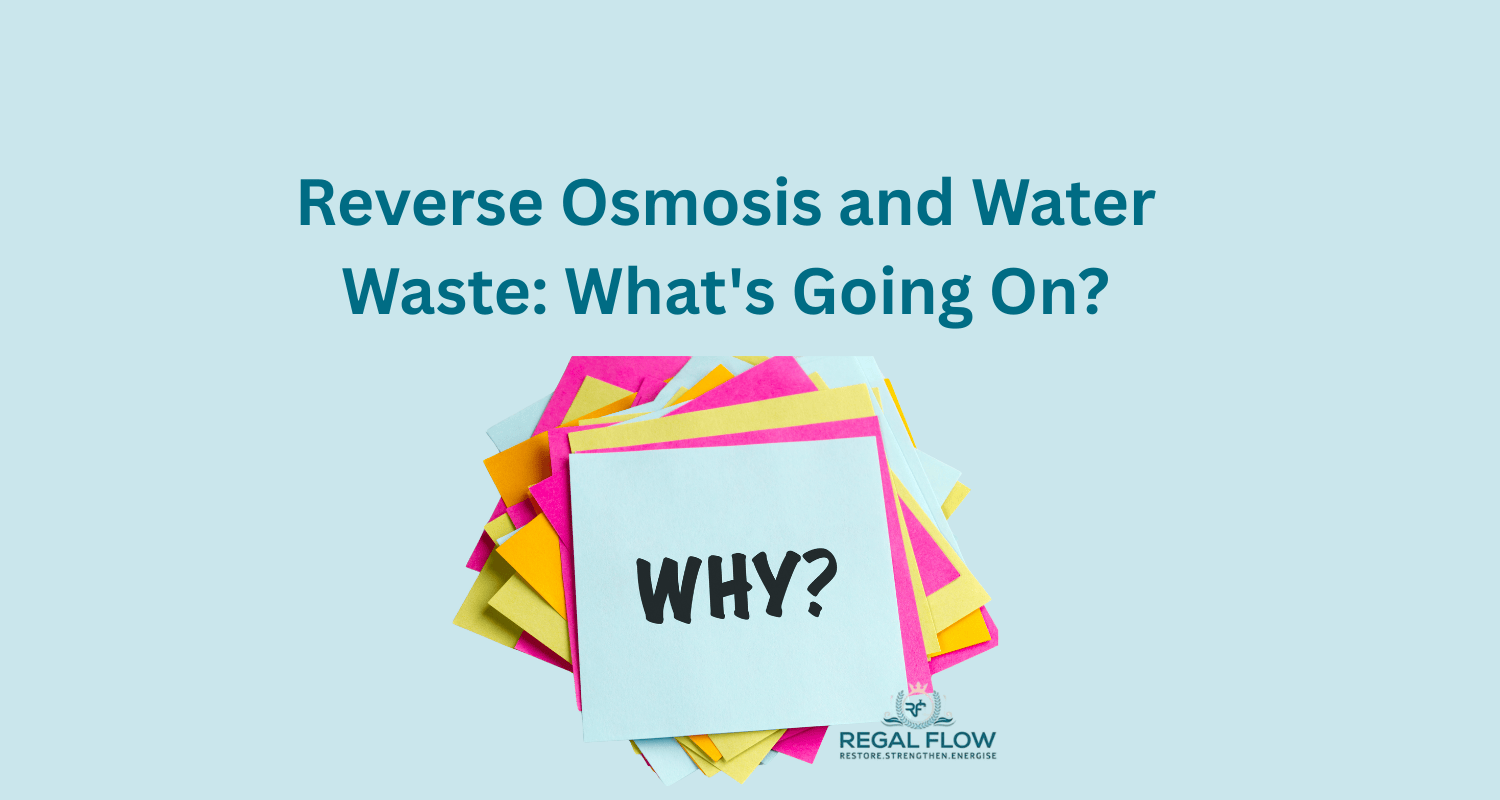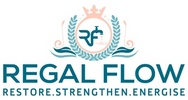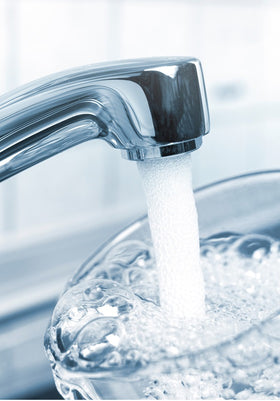
Why Do Reverse Osmosis Systems Waste Water?
Ever wondered why your reverse osmosis (RO) system seems to waste so much water? Well, it’s not trying to annoy you! The short answer: it’s all about keeping your water pure and free of contaminants. In Reverse Osmosis FAQs: Answers to Common Questions, we explain why this happens—and how countertop dispensers fit into the equation. Read on to learn how to cut down that waste!
Understanding RO System Operation
Reverse Osmosis systems are brilliant when it comes to providing clean, purified water. But, many people are left scratching their heads when they see how much water gets discarded in the process. Let’s break down what’s happening and why water waste is an inevitable part of the RO method.
The RO Filtration Process
At its core, an RO system works by forcing water through a semi-permeable membrane. This membrane is a clever filter, allowing only tiny water molecules to pass through while blocking larger particles like minerals, chlorine, and bacteria. The result? Super clean water that’s almost free of impurities. However, there’s a catch—some of the water has to be flushed out. As the contaminants are filtered out, they are left behind in the water that doesn’t pass through. This is the "waste" water that many RO systems discard. Essentially, it’s a way of ensuring the system stays effective, removing as many impurities as possible.
Reject Water and Concentration Gradient
Here’s the science bit: when water moves through the membrane, it follows the principle of a concentration gradient. In simple terms, water moves from areas of low concentration (pure water) to areas of high concentration (contaminated water). This helps the system filter out as much as possible. But, to ensure the membrane continues to do its job, the system needs to expel the contaminated water. This flushes out the impurities and maintains the efficiency of the system. Without this reject water, the membrane could quickly clog up, making your RO system less effective.
Factors Affecting Water Waste
Not all RO systems are created equal. The amount of water wasted can vary based on a few important factors. Let’s take a closer look at what affects this waste.
System Efficiency and Design
Older models of RO systems can waste a lot of water—sometimes as much as four gallons of waste for every one gallon of purified water! But don’t worry; newer, more efficient systems are changing that. Many modern systems now boast a more reasonable 2:1 ratio, meaning for every two gallons of water processed, only one is wasted. This efficiency is all thanks to better system design, including pressure control, improved membranes, and smart filtration features that reduce the amount of waste. So, if you're concerned about wasting water, upgrading to a more efficient system could make all the difference.
Input Water Quality
Another big factor in water wastage is the quality of the input water. If your tap water is already full of contaminants, the RO system has to work harder to filter it. This means more water gets flushed out to keep the system running smoothly. In contrast, if your tap water is cleaner to begin with, the system will waste less water. Some RO systems even come with pre-filters that help improve the input water quality, reducing the overall waste in the process. It's like giving your RO system a little helping hand!
Minimising Water Waste
If you’re concerned about the amount of water being wasted by your RO system, there are some clever ways to reduce it. From optimising your system to finding alternative uses for the reject water, there are plenty of tricks to make your system more efficient.
System Optimisation Techniques
One of the easiest ways to reduce water waste is by keeping your system in tip-top condition. Regular maintenance, such as replacing filters and cleaning the system, can prevent blockages that might cause unnecessary waste. You can also look for systems that have features designed to improve water efficiency. Some newer models include pressure regulators and permeate pumps that increase the system's efficiency and reduce waste. A little investment in the right system or maintenance can go a long way!
Alternative Uses for Reject Water
Instead of letting your RO system’s reject water go straight down the drain, why not put it to good use? Many people are now using it for non-drinking purposes, like watering plants or washing their car. You could even repurpose it for cleaning tasks or flushing toilets. Some advanced systems allow you to collect and reuse the reject water for these kinds of tasks, helping reduce waste in the home or office. It’s a win-win situation that reduces both water and waste!
Environmental Impact and Sustainability
As the world faces increasing pressure on water resources, being mindful of water consumption is more important than ever. Let’s explore how RO systems fit into the bigger picture of water conservation and sustainability.
Water Conservation Practices
In many parts of the world, water is a precious commodity. If you live in an area where water scarcity is a concern, every drop matters. That’s why it’s essential to balance the benefits of purified water with the need to conserve this valuable resource. By investing in more efficient RO systems, practising regular maintenance, and reusing reject water, you can help reduce your overall water footprint. Even small changes can have a significant impact on water conservation in your home or business.
Sustainable Solutions
Fortunately, the future of RO systems is looking greener. Newer technologies are making RO systems more efficient and sustainable, with features like zero-waste options, energy-saving pumps, and improved filtration processes. These systems use less water and energy, which is great news for both your wallet and the planet. As these technologies become more widespread, we’ll likely see water-saving features becoming standard in more RO systems, pushing us closer to sustainable water management in the home and beyond.
Addressing Common Misconceptions
Many people assume that reverse osmosis systems are inherently wasteful, but this isn’t entirely true. Let’s clear up some common misconceptions and better understand how RO stacks up against other filtration methods.
Comparing RO with Other Filtration Methods
When compared to other filtration methods, reverse osmosis isn’t as wasteful as it may seem. For example, distillation uses massive amounts of energy and water, while other filtration methods, like activated carbon, don’t waste water but also don’t offer the same level of purity. So, when you weigh the benefits, RO is still one of the most effective and efficient options.
Balancing Efficiency and Purity
One of the main reasons RO systems waste water is to achieve that level of purity. There’s a delicate balance between ensuring that your water is clean and minimising waste. As technology continues to improve, we are getting closer to systems that can provide ultra-pure water with less waste, but it’s still a trade-off. If purity is a priority for you, a little water waste is often the price to pay.
Conclusion: Sustainable Management of RO Waste Water
At the end of the day, RO systems are one of the most effective ways to ensure you have access to clean, safe water. But, as we’ve learned, they come with a certain level of waste. The good news is that there are plenty of ways to minimise that waste and make your system more sustainable. To make your RO system as efficient as possible, look for newer models that offer better water-saving technologies. Keep your system maintained, and consider reusing reject water for tasks like gardening or cleaning. With a little effort, you can enjoy the benefits of purified water while reducing your environmental footprint.
Key Takeaways on Water Efficiency
-
RO systems waste water because they need to flush out contaminants to maintain efficiency.
-
Newer systems are much more efficient, with better designs and features that reduce waste.
-
Regular maintenance and optimising your system can also help cut down on waste.
-
Repurposing reject water for non-drinking uses can help minimise overall water consumption.
More Reverse Osmosis info we think you'll love
Are Reverse Osmosis Filters Interchangeable?
Are Reverse Osmosis Filters Universal?
Are Reverse Osmosis Systems Safe?
Are Reverse Osmosis Systems Worth It?
Can Reverse Osmosis Water Cause Constipation?
Can Reverse Osmosis Water Cause Diarrhoea?
Can Reverse Osmosis Water Dehydrate You?
Is Reverse Osmosis Water Bad for your Health?
Why is Reverse Osmosis Water Good for You?
Why Does My RO System Keep Draining?
Why is my Reverse Osmosis System Leaking?
Why is my Under Sink Water Filter Making a Noise?
Why is Reverse Osmosis Expensive?



Leave a comment